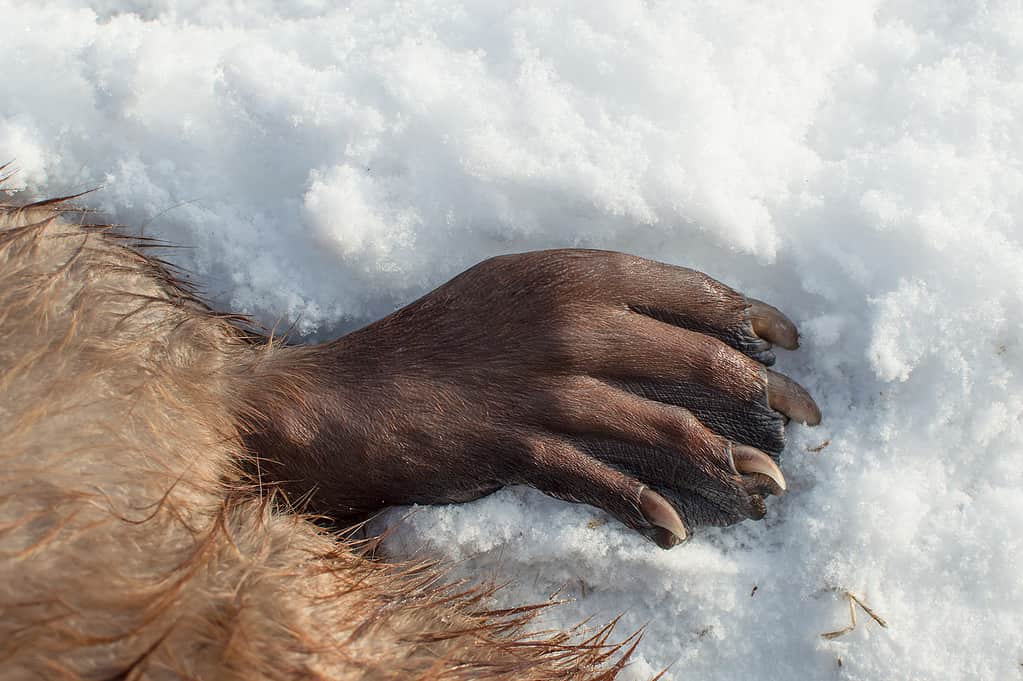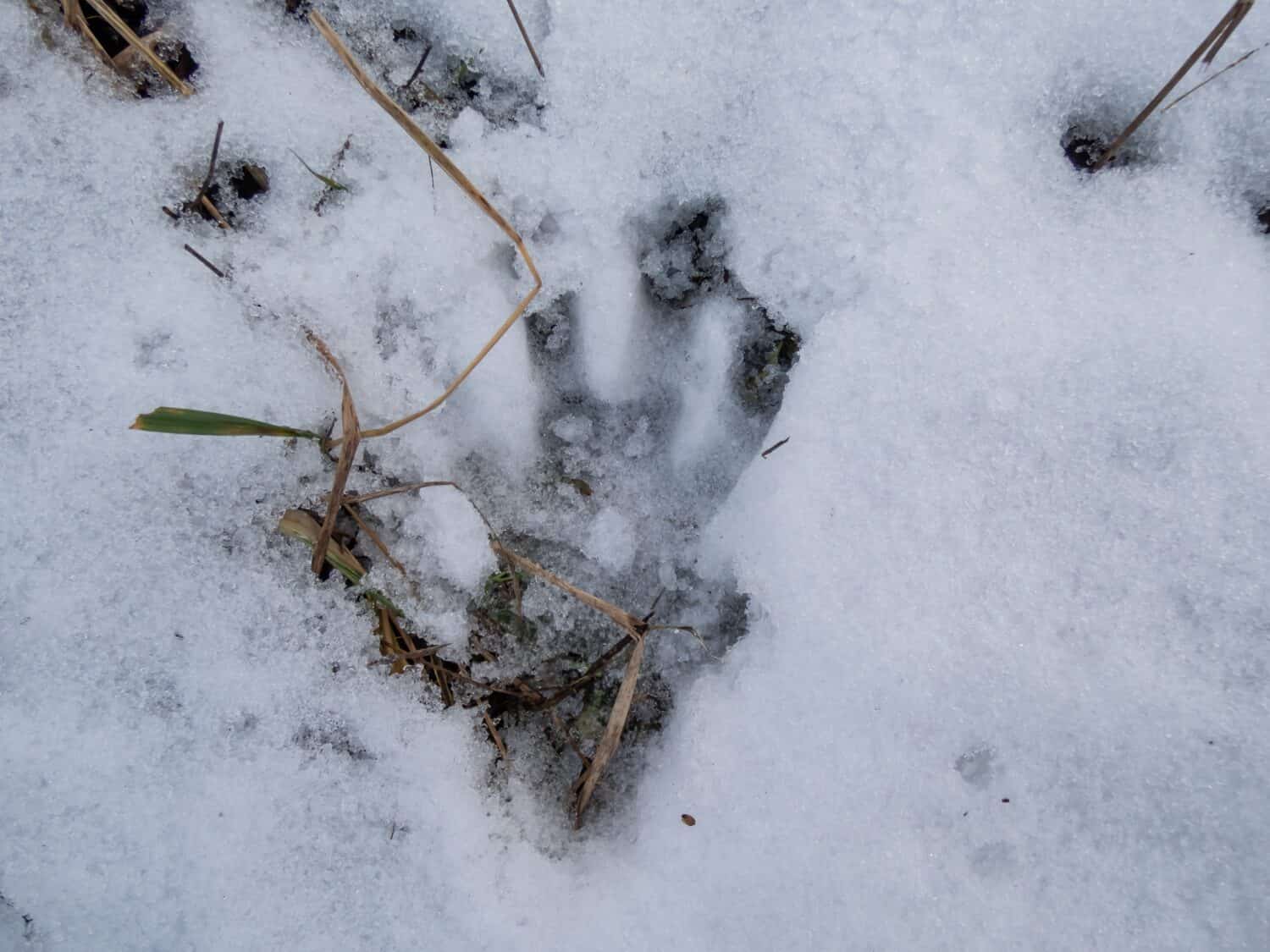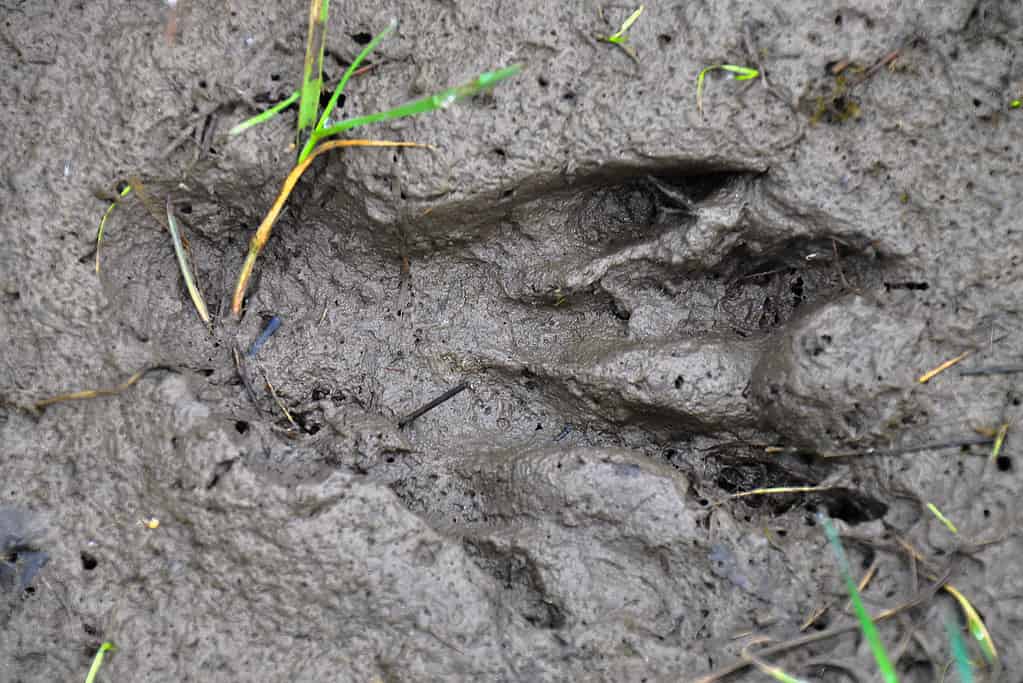Beavers are essential to our ecology. They may also be a reasonably enjoyable (and simple) species to track. The beaver is a rather straightforward animal, whether you’re new to tracking or have thousands of tracks memorized.
Understanding their footprints allows you to learn much about these creatures’ behavior, habits, and health.
Of course, recognizing tracks on various surfaces is a bit more difficult. As a result, we’ll look at spotting beaver footprints on various surfaces so you can always locate these furry pals.

Anatomy of a Beaver Track
First, some basics.
There are three simple parts of a beaver track that you need to know: heel pad, toe pads, and claw marks. These all help you identify a beaver track and what was made by something else.
The heel pad is the most significant part of the track and is located on the back of the foot (as you might guess). It usually has a kidney shape or is rounded. Beavers use this part to bear their weight, so it is often the most distinguishable.
The toe pads are smaller and located on the front of the foot. Beavers have four different toe pads. They should form small semicircles around the heel pad. Their toe pads are also where their claws come out.
These claws should leave claw marks in most cases. These claw marks will look like small triangles at the end of each toe pad. However, because the claws don’t bear much weight, they are usually only visible on specific terrain. Just because you don’t see claw marks doesn’t mean it isn’t a beaver, especially if the ground is hard.

©iStock.com/904574778
Identifying Beaver Tracks in Snow
Beaver tracks are often larger and broader than other rodents, especially in the snow. They should measure between 4 to 6 inches in length and width. You should be able to see a distinctive kidney bean shape, including a curved back and straight front edge. In the snow, a beaver track probably looks a lot like a human handprint.
Beavers tend to drag their tail in the snow. So, you should notice a long, thin line behind their tracks.
Muskrat tracks are often very similar to beaver in the snow but have a more oval shape and less “kidney bean” shape. Otter tracks will be much smaller than a beaver, only measuring 2 to 3 inches.
The tail mark can help distinguish beavers from other animals, as well.

©Kristine Rad/Shutterstock.com
Identifying Beaver Tracks in Mud
Beaver tracks in the mud are often round or oval-shaped with distinctive heel and toe markings. You’ll often be able to see the claw markings in very wed mud, as well. The heel pad may leave a more profound impression, as this is where the beavers put most of their weight.
The claw markings will be the most helpful feature in this case.
Muskrat tracks are similar in size to a beaver. However, they have less of a distinctive heel and toe shape. Instead, they’re more oblong and leave uniform impressions in the mud. You won’t see claw markings, either.
Raccoon tracks can resemble beaver tracks in the mud. However, raccoons have five toe prints, which should be very obvious. Raccoons also have more extended, distinctive claws, which should appear in the mud. They’ll probably be smaller, too.
I recommend looking for distinctive heel and toe markings when identifying beaver tracks. Pay attention to the number of toes and whether or not claw marks are visible.

©Marek Rybar/Shutterstock.com
Other Ways to Identify Beaver Activity
You should never rely on tracks to identify whether or not beavers are present. Beavers leave plenty of evidence of their actions, which might reveal what they’re up to.
Dam construction is one of the most visible indicators. Most beavers will create dams in rivers and streams, which you should be able to spot. Look for logs, sticks, and mud heaped up in a semicircle as evidence of dam-building efforts.
Beavers construct lodges and burrows in addition to dams. These structures are constructed along the water’s edge to provide refuge. They are frequently seen in areas inundated by a beaver dam. They frequently resemble cone-shaped piles of sticks and mud in the water.
Burrows are a little different. They are frequently excavated into a river or stream bordered by wood and mud. They are less visible in most cases.
Beavers have powerful teeth and will leave chew marks on trees and other woody plants. You can often see these chew marks in areas frequented by beavers.
Sometimes, when beavers are very active, you can smell them. Beavers have scent glands near their tail, releasing a musky, pungent odor near their hangout areas. If a beaver has been where you are recently, you may be able to smell them.
By understanding these other ways to identify beaver activity, you can gain a complete picture of the beaver’s presence in an area and confirm the presence of beavers even if their tracks are not visible.

©Ronnie Howard/Shutterstock.com
Now, Find Some Beavers
And that’s it, folks! You are now a beaver tracking expert! Now all that’s left to do is find some beavers.
You can follow this guide to spot beaver tracks in your environment. For new trackers, looking for more obvious signs of beaver activity is often the easiest (such as dam-building and lodges). Once you’re in a spot, beavers probably frequent, you should look for tracks.
Of course, if you’re out and about and see some beaver tracks, great! Walks become so much more enjoyable when you can read the environment around you, including tracks left by our furry friends.
So grab your binoculars, put on your boots, and head to the nearest river or stream to track these amazing animals. You might even glimpse a beaver or two swimming in the water nearby.
The post Beaver Tracks: Identification Guide for Snow, Mud, and More appeared first on AZ Animals.
from Animal News, Facts, Rankings, and More! - AZ Animals https://ift.tt/slECNdv